While I've been waiting for Kelvin to develop his Gilmer drive pulleys, I decided to see how my #1 motor was doing internally. This is the motor that struggled to pull 498 ponies on the dyno back in 2008. After that rousing success, we discovered the exhaust cams were 11 degrees out (at the cams), however due to the timing belt being uber loose, we're inclined to think the problem may have been the milling of the heads and deck, as well as the cams. But fast forward to the present.....
First, Scott Marshall & I had a brainstorming session by email a couple months ago, and the net result was an apparatus that could actually measure the compression ratio of an engine, if, and only if, you could keep the valves closed (and sealed). I thought this would be a doddle, since the cams were already out of this motor, but Murphy was watching.....
Keep in mind that I really like doing weird stuff with motors, and the weirder the better. My neighbors have been entertained by me spraying down the front shrubs with several M/W injection setups, testing my "Texas Chainsaw EDIS8 Timing Simulator" and loading & unloading many engines in/out of my Suburban at all hours of the day & night. But this compression tester rig is the ultimate in weird, and it had my brain surgeon neighbor making passes by the house in his 850 every fifteen minutes to see what sort of ritual sacrifice I was up to. Here's a couple of pics of the apparatus in use:
Getting it filled to the calibrated line (BTW, that's ATF, not blood, but don't tell my neighbor) BTW, how d'ya like those PVC pipe camshafts? They worked well for keeping the buckets in place, since the motor had no cams!:
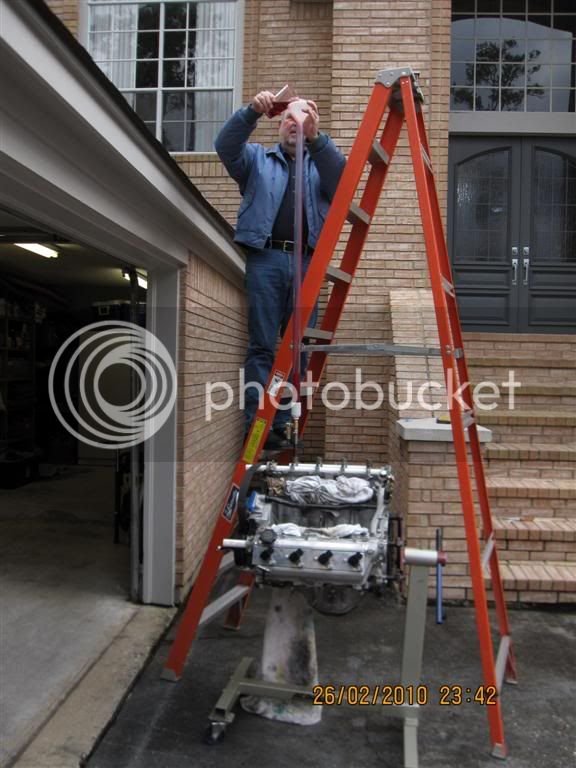
Barring the engine over and getting ready to measure the height of the column:
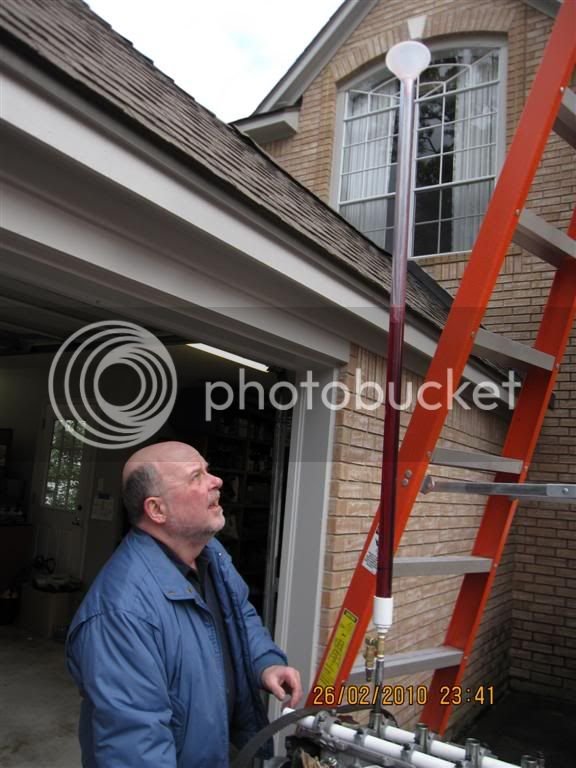
So, with this apparatus, I "measured" the compression ratio to within around 0.25 points of what it was calculated to be. The only problem is that the exhaust valves in the cylinder I was measuring were leaking big time (thank you Mr. Murphy), so I was losing fluid. Had I had a good tight seal, I'm sure the results would have been closer.
So the next step was to run a leakdown test on the motor to see just how bad those valves were leaking. Now I don't have an air compressor in my shop/garage, but since my "other" hobby is scuba diving, I do usually have a full tank of air sitting around the garage, so with the aid of a few adapters, voila, one leakdown tester:
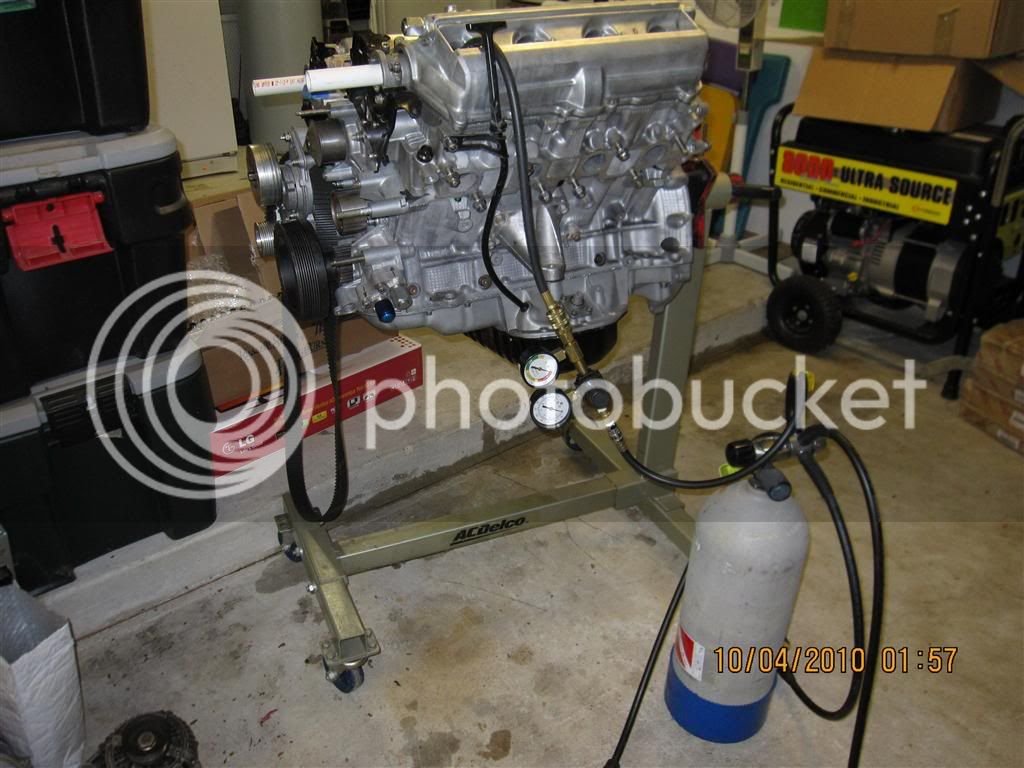
So I fired up my little rig up on cylinder #1, and the motor started blowing air out the exhaust port, and the tester showed 95-98% leakage. Hmmm, not good. Did it on all cylinders and here are the results:
#1......95.......Exhaust
#3......95.......Intake
#5......95.......Intake + Exhaust
#7......95.......Intake + Exhaust
#2......95.......Exhaust
#4......75.......Intake
#6......75.......Crankcase + Intake
#8......12.......??? maybe crankcase
Woohoo, #8 had a faint leak out the intake, but it indicated only 12% leakage. One good cylinder out of 8 (Thank you Mr. Murphy)
So since it looks like the motor has a major leakage problem, I decided to find out how much of this problem was in the heads, and whether there's any problem down in the short block. But to do that, I needed to isolate or seal off the valves completely. Hmmm, a couple of blockoff plates at the intake and exhaust ports ought to do it. So I took an intake & exhaust gasket down to my friendly fabricator and asked him to water jet me up a blockoff plate for the intake, and make a hunk of trimmed ally flat plate for the exhaust.
Two 10 degree wedge washers were necessary under each bolt head on the intake side, because the bolts aren't perpendicular to the manifold flange:
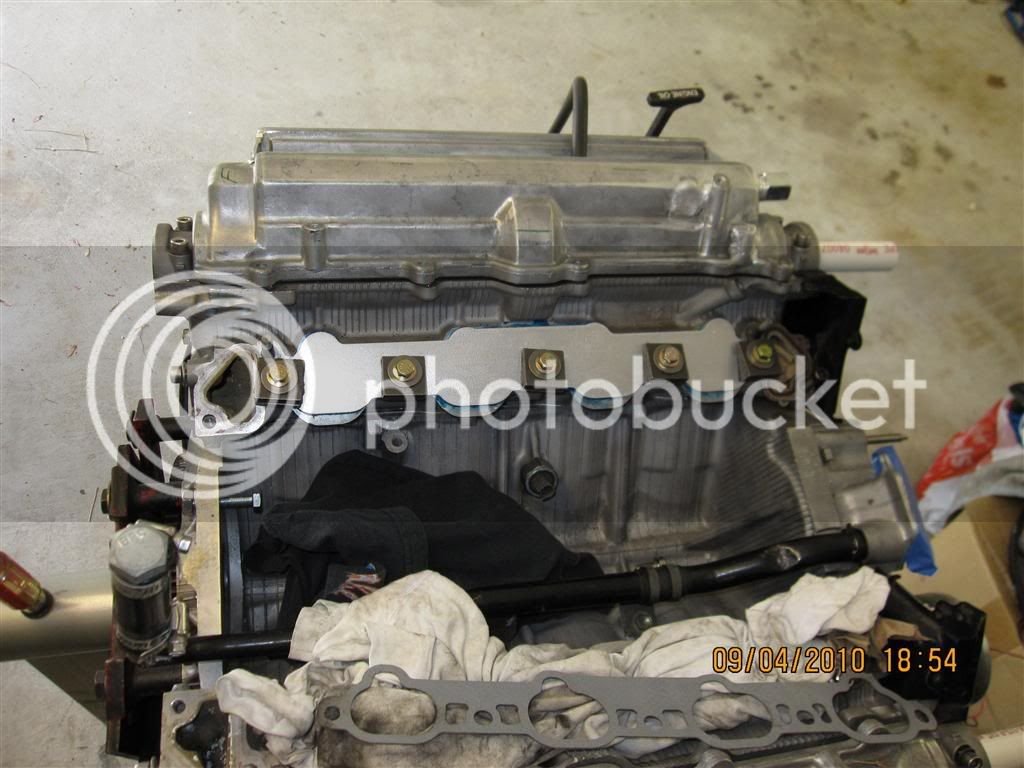
And the hunk of 3/8" ally on the exhaust:
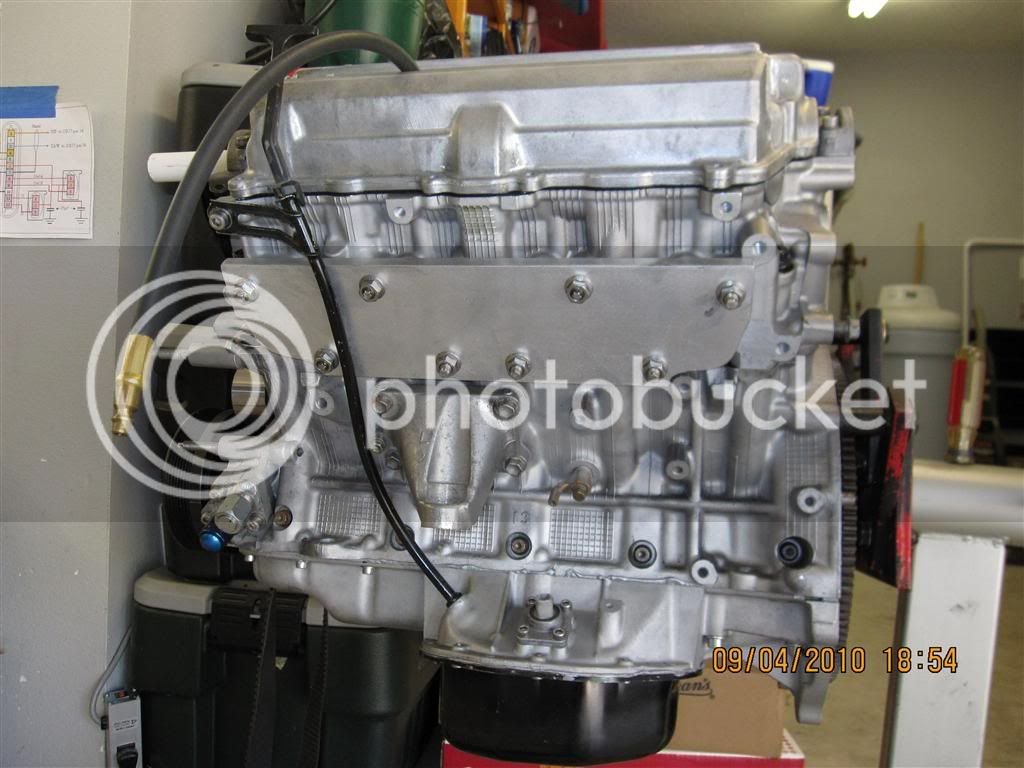
Then I reran the tests and came up with these numbers:
Cyl.....1st.....2nd.....3rd
#1......38......35......45
#3......15......22......25
#5......15......25......20
#7......35......30......45
The 1st test was with dry cylinders, the 2nd was after a shot of WD40 in the plug holes, and the 3rd was after I spun the motor a bit with my 1/2" drill motor.
So, it would appear that #1 & 7 definitely have some issues with ring sealing. And all cylinders have issues with valves not sealing.
Next I'll rig up the plates on the right hand bank and will test them.
Bottom line, for any of you guys who have engines sitting on stands (Scott?, Justen?), now is a perfect time to run this very useful diagnostic test. For $50 in materials and water jetting, you can check the health of both your top end and short block, separately. I was stunned to see all the leakage this #1 engine has, and it leads me to wonder, just how much damage we did to it on the dyno, and how much was there already?






